The Rise of At-Home Workouts: How to Stay Fit Without the Gym
The fitness landscape has changed dramatically over the past few years, with at-home workouts becoming increasingly popular. The COVID-19 pandemic accelerated this shift as gyms closed and people were forced to find alternative ways to stay active. However, even after gyms reopened, many individuals have chosen to continue their fitness journeys at home, attracted by the convenience, cost-effectiveness, and flexibility of working out on their own terms. In this article, we will explore the rise of at-home workouts, their benefits, and how you can create an effective at-home fitness routine to stay fit without ever setting foot in a gym.
Why At-Home Workouts Are So Popular
At-home workouts have seen a significant rise in popularity, thanks to advancements in technology, increased access to fitness resources, and a shift in the way people think about health and wellness.
1. Convenience and Flexibility
One of the primary reasons people choose at-home workouts is the convenience they offer. With a home workout, there’s no need to commute to a gym or adhere to strict opening hours. You can work out at any time of day that suits your schedule, whether that’s early in the morning, during lunch, or late at night.
- No Commute: Eliminating the need to drive to and from the gym saves time and makes it easier to fit workouts into a busy day.
- Customizable Schedule: You can choose when and how long to work out, allowing you to create a schedule that fits seamlessly into your daily life.

2. Cost-Effective Fitness
Gym memberships can be expensive, especially when you factor in additional costs like travel, workout gear, and personal trainers. At-home workouts provide a cost-effective solution that can be tailored to fit any budget.
- No Membership Fees: With at-home workouts, you eliminate monthly membership fees and can invest in a few key pieces of equipment that last for years.
- Free Online Resources: There are countless free workout videos available on platforms like YouTube, as well as fitness apps that provide structured routines without the need for an expensive subscription.
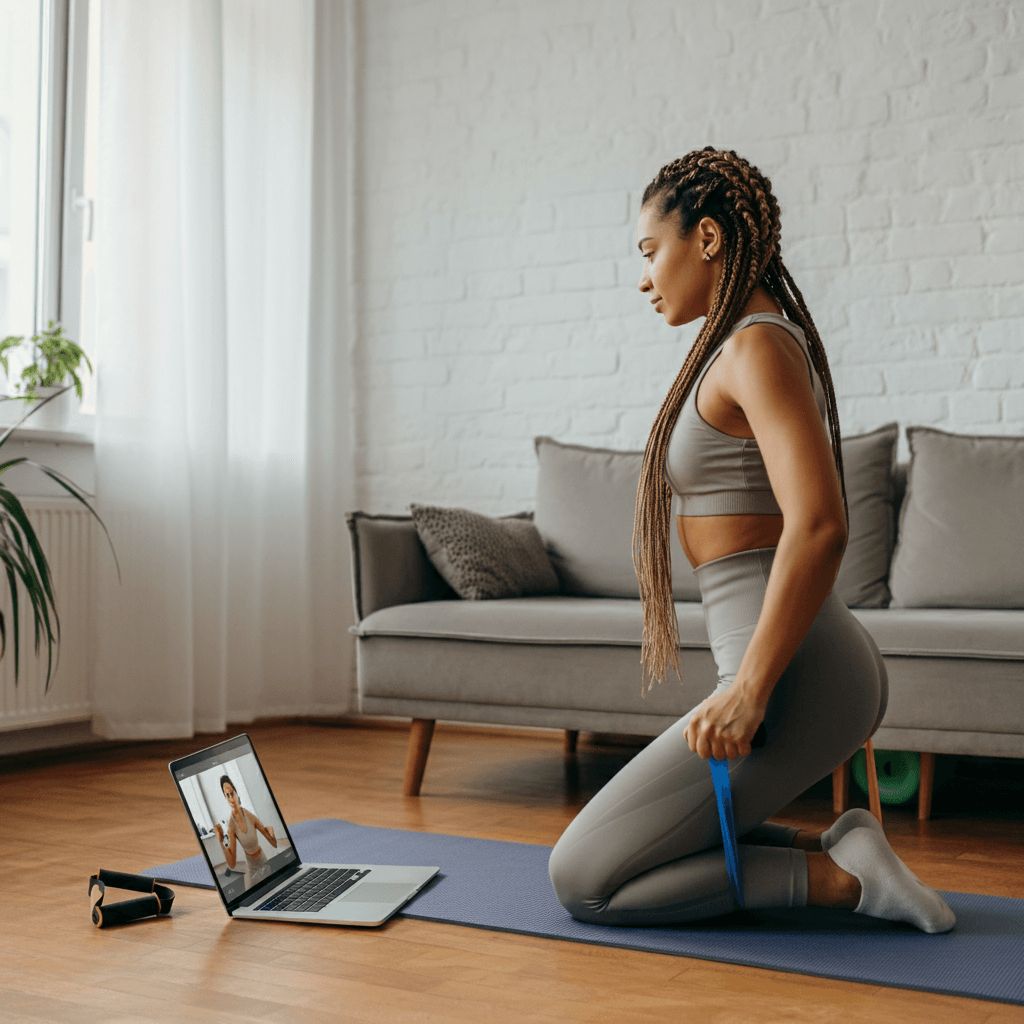
3. A Variety of Workout Options
At-home workouts offer a wide variety of options, from bodyweight exercises to yoga, strength training, high-intensity interval training (HIIT), and more. The availability of online fitness platforms has made it easier than ever to access a diverse range of workouts.
- Bodyweight Exercises: Exercises like push-ups, squats, and planks require no equipment and can be done anywhere, making them perfect for at-home workouts.
- Virtual Fitness Classes: Many fitness studios and personal trainers now offer virtual classes, allowing participants to join live or pre-recorded sessions from the comfort of their homes.
- Yoga and Pilates: Yoga and Pilates are popular at-home workouts that require minimal space and equipment, making them ideal for improving flexibility, strength, and mental well-being.
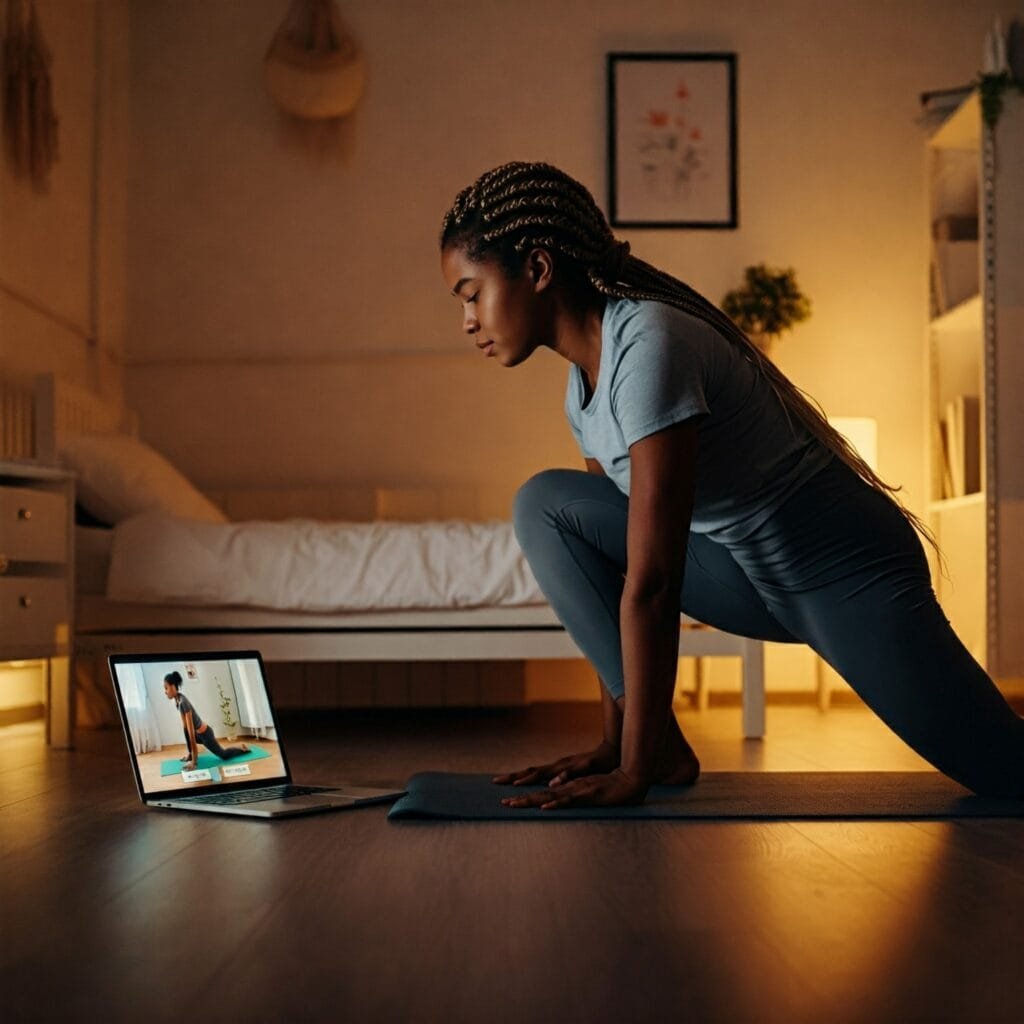
How to Create an Effective At-Home Workout Routine
Creating an effective at-home workout routine involves understanding your fitness goals, choosing the right type of exercises, and ensuring you stay motivated and consistent. Here’s how to get started:
1. Define Your Fitness Goals
Before you start any workout routine, it’s important to define your fitness goals. Are you trying to lose weight, build strength, improve flexibility, or enhance your cardiovascular health?
- Weight Loss: If your goal is weight loss, focus on a combination of cardio workouts like HIIT and strength training to maximize calorie burn and build lean muscle.
- Strength Building: If you want to build strength, incorporate resistance exercises using bodyweight, dumbbells, or resistance bands.
- Flexibility and Mobility: For improving flexibility, consider incorporating yoga or Pilates into your routine.
2. Choose the Right Equipment
While you can do effective at-home workouts with no equipment, adding a few key items can enhance your workout experience and help you achieve your goals.
- Yoga Mat: A yoga mat is essential for providing comfort during exercises that require you to be on the floor, such as yoga, Pilates, and core workouts.
- Resistance Bands: Resistance bands are versatile and can be used for strength training, stretching, and mobility exercises.
- Dumbbells or Kettlebells: Investing in a set of dumbbells or kettlebells allows you to increase the intensity of your workouts and build strength effectively.
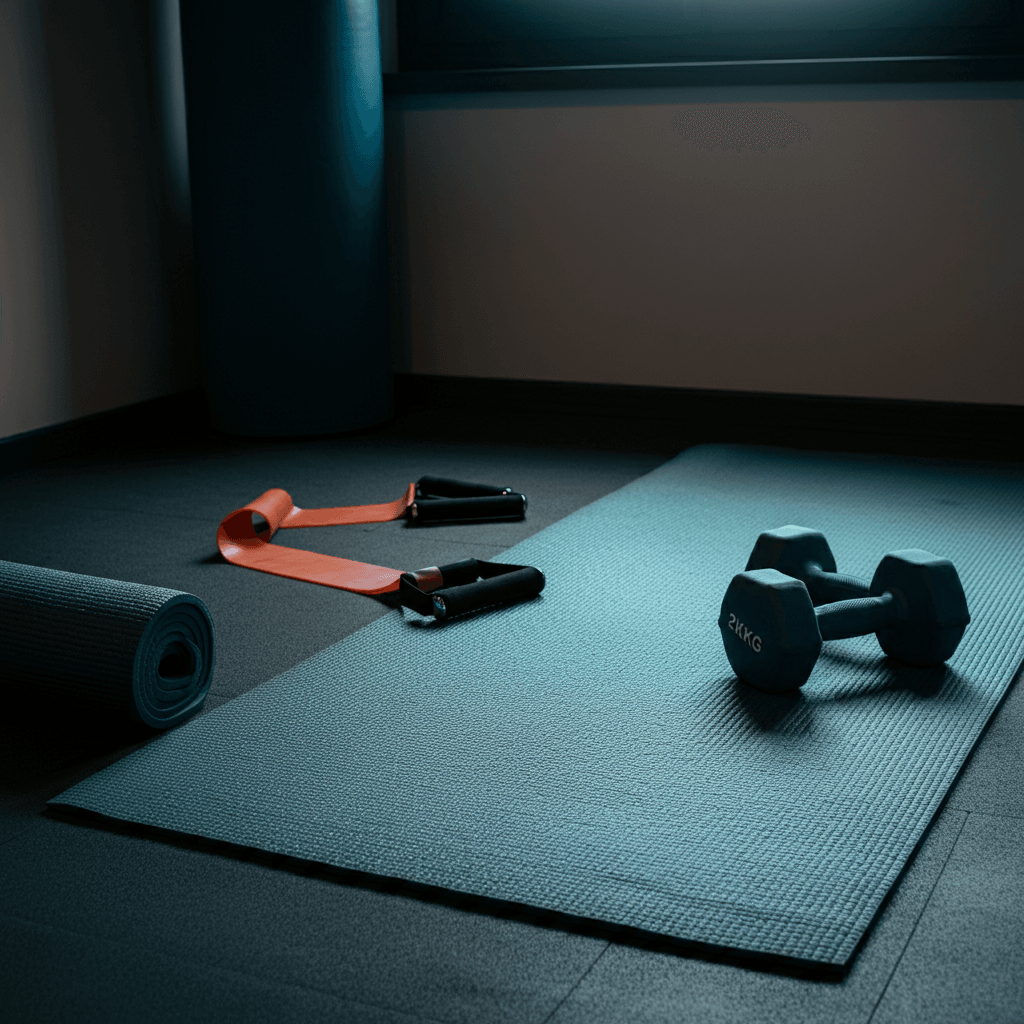
3. Mix Up Your Workouts
To keep things interesting and ensure you’re working all areas of your body, mix up your workouts throughout the week. Here are some types of workouts to consider incorporating:
- Cardio: Cardiovascular exercises like jumping jacks, burpees, and high knees get your heart rate up and help improve cardiovascular fitness. You can also follow online HIIT workouts for a more structured cardio routine.
- Strength Training: Focus on different muscle groups each day, such as upper body, lower body, and core, using bodyweight exercises or weights to build strength.
- Flexibility and Mobility: Dedicate one or two days a week to stretching or practicing yoga to improve flexibility and prevent injuries.
- Rest and Recovery: Don’t forget to include rest days in your routine. Rest and recovery are crucial for allowing your muscles to repair and grow, as well as for preventing burnout.
Tips for Staying Motivated with At-Home Workouts
Staying motivated to work out at home can be challenging, especially without the accountability of a gym or a fitness class. Here are some tips to help you stay consistent:
1. Set Up a Dedicated Workout Space
Having a dedicated workout space in your home can help you stay focused and motivated. This doesn’t need to be a large area; even a small corner with a mat and some equipment can be enough.
- Minimize Distractions: Choose a space where you won’t be easily distracted by household chores or other activities.
- Create a Motivating Environment: Add motivational quotes, posters, or even a mirror to create a space that inspires you to work out.
2. Set Realistic Goals and Track Progress
Setting realistic goals and tracking your progress can keep you motivated. Whether it’s doing a certain number of push-ups, improving your flexibility, or completing a 30-day challenge, tracking progress helps you see how far you’ve come.
- Fitness Apps: Use a fitness app to log your workouts and track progress over time.
- Celebrate Milestones: Celebrate small milestones, such as increasing the number of reps or improving your stamina. Recognizing your achievements keeps you motivated to keep going.
3. Join Online Fitness Communities
Connecting with others who are also working out at home can provide a sense of community and accountability. Many online fitness communities offer support, motivation, and challenges to help you stay on track.
- Virtual Challenges: Join virtual fitness challenges or participate in live-streamed classes to add a social element to your workouts.
- Support and Encouragement: Being part of a community can help you stay committed to your routine, as members often share tips, successes, and words of encouragement.
The Benefits of At-Home Workouts
At-home workouts provide numerous benefits, from convenience and cost savings to improved mental health and flexibility.
1. Improved Mental Health
Exercise is known to improve mental health by reducing stress, anxiety, and depression. At-home workouts provide a convenient way to fit physical activity into your daily routine, which can lead to better mental well-being.
- Endorphin Boost: Exercise releases endorphins, the body’s natural mood elevators, which help improve your mood and reduce stress.
- Mindfulness: Workouts like yoga and Pilates incorporate mindfulness, which can help reduce anxiety and improve focus.
2. Flexibility in Workout Types and Timing
The flexibility of at-home workouts allows you to choose the type of exercise that fits your needs and schedule, making it easier to stay consistent.
- Tailored Workouts: You can tailor your workouts to your fitness level and goals, adjusting the intensity and duration as needed.
- Anytime, Anywhere: The ability to work out at any time that suits you removes the barriers that often come with fixed gym schedules.
3. Safe and Comfortable Environment
For some, the gym environment can feel intimidating or uncomfortable. At-home workouts provide a safe, comfortable space where you can exercise without feeling self-conscious.
- Privacy: Working out at home allows you to exercise without the pressure of being watched by others, which can be particularly beneficial for beginners.
- Control of Environment: You have full control over your workout environment, including the music, temperature, and the type of equipment you use.
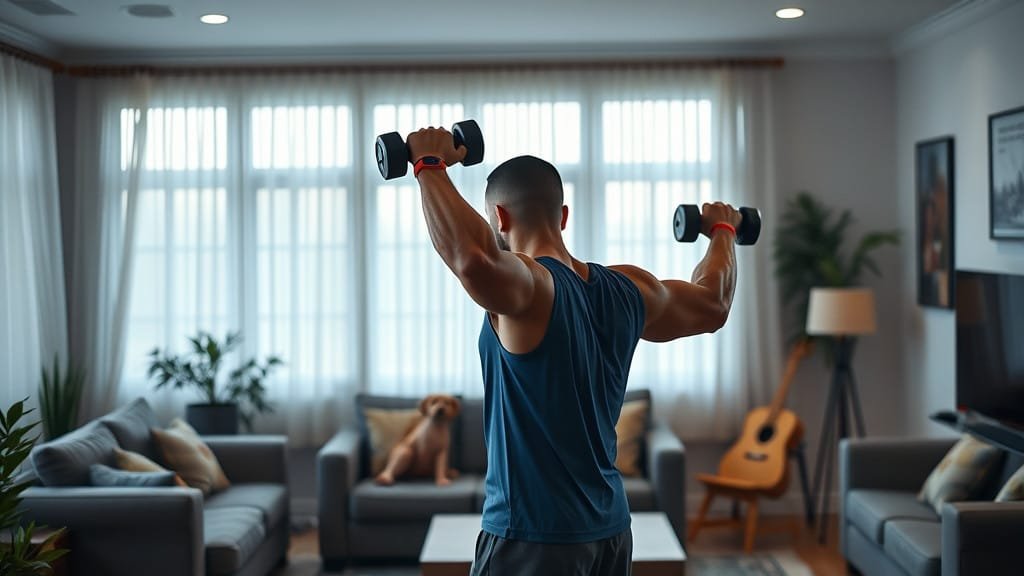
Conclusion
The rise of at-home workouts has transformed the way people approach fitness, providing a convenient, cost-effective, and flexible way to stay active without the need for a gym. By setting clear goals, creating a dedicated workout space, and mixing up your routines, you can create an effective at-home workout regimen that helps you achieve your fitness goals. Whether you’re looking to lose weight, build strength, or simply stay active, at-home workouts offer the freedom to exercise on your terms and enjoy a healthier lifestyle.

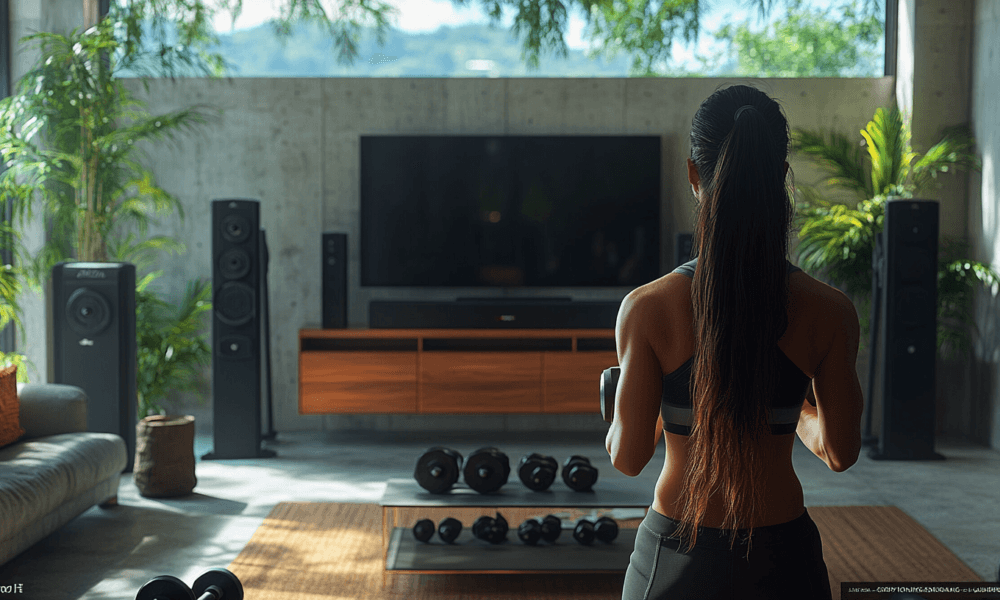


No Comment! Be the first one.